




By Tim Lewis, Zamourad Iqbal Reporter, News Editor
Pierce College will offer its four-year biomanufacturing degree program, commencing in the spring 2026 semester.
Pierce President Ara Aguiar is excited about the launch of the Biomanufacturing baccalaureate program and has praised Biotechnology Program Director Aron Kamajaya and the team for their work on this project.
“Professor Kamajaya has been working hard to prepare the lab. I’m very proud of all that work, and it will be exciting to see our first graduate program,” Aguiar said. “We get to start thinking about what colors the gowns will be and what the diplomas will look like. And all those nuances of creating a new program, it’s very exciting, and this is the fun part of my job.”
along with all the necessary resources, including the equipment required for bio manufacturing,” Aguiar said. “We really owe Congressman Sherman; his support has been great. I’m very happy. It’s our first one. I hope it’s the first of many baccalaureate degrees.”
a bachelor’s degree from a community college opens career doors for students who can’t afford expensive schools.
of employers near places of innovation like universities and airports for reasons of distributive logistics,” Kamajaya said.
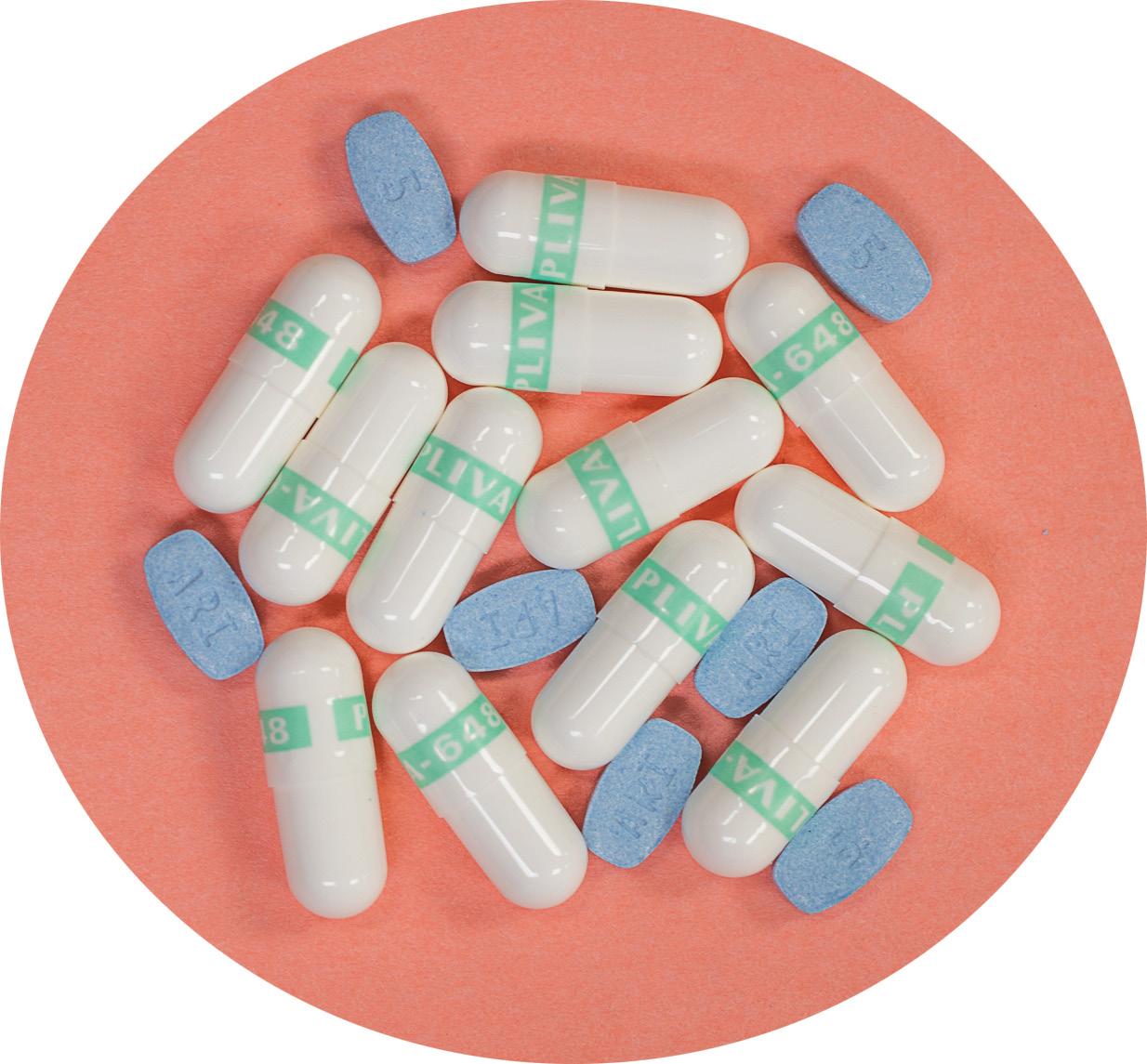
Aguiar mentioned in 2021 that Pierce College received funding from Congressman Brad Sherman, which helped build the program’s resources.
“Congressman Sherman was very instrumental in getting $2 million in funding that provided the opportunity for Professor Kamajaya to create, establish, and implement the program,
In a release statement made by the LAPC Communications Office, the purpose of the program is to show the college’s commitment to “expanding workforcefocused educational opportunities and increasing access to high-wage careers. It also supports key goals outlined in the college’s 2022–2026 Strategic Master Plan, including improving student success, meeting regional labor market demands, and advancing equity in higher education.”
Aguiar added that having
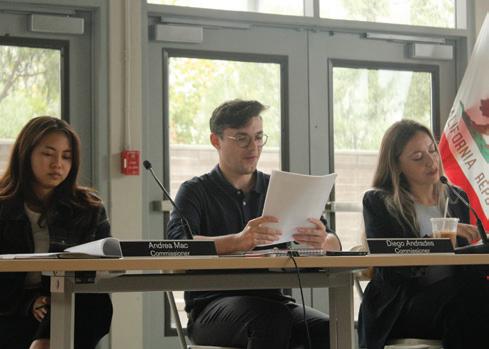
“To earn a baccalaureate degree in dental hygiene at a private school. When I conducted research a while back, the range was between 90,000 and 120,000,” Aguiar said. “In terms of fees, tuition is between $10,000 and $ 11,000 at West LA College. We have five CSUs around LA County alone, and we have UCS, UCLA, and USC. Our students do have access, but the barrier is the financial one. The key here is not to compete. We’re providing our students with the opportunity to access a graduate degree.”
During an online information session, Professor Kamajaya met with prospective students to discuss Biomanufacturing, the emerging field, admission requirements, and the program’s structure.
“The biomanufacturing business is very big. 8/10 of the biggest drugs fall under the scope of biomanufacturing,” Kamajaya said.
According to Dr. Kamajaya, the current state of the biotech industry in Los Angeles is characterized by numerous opportunities.
“Biotech is somewhat spread out in Los Angeles as it’s an innovative industry so that you will find clusters
While Los Angeles is traditionally known for being the home of entertainment, this has slowly begun to change as new federal initiatives drive towards Biomanufacturing. Los Angeles has followed suit and is now shifting towards a future in biotech; Pierce College is following this trend.
Dean of Math and Science Donna-Mae Villanueva expressed her excitement for the launch of the program she envisioned 20 years ago.
We’re finally here and will be able to bring the program with a soft launch in spring 2026, which is exciting because this has been a dream of mine since I started my career two decades ago, if
we were ever able to offer baccalaureate degrees,” Villanueva said. “Now we can do this. We see pathways that are so exciting, and there are more opportunities in the future that I can see will really open doors and create opportunities for students.” For those interested in applying for the LAPC fouryear Biomanufacturing program, students must first hold an associate degree or have equivalent credit through prior work experience.
Information sessions are currently being held regularly for those interested in learning more about the program. There will also be an opportunity to meet with the program director, Aron Kamajaya, via Zoom. These meetings will be available throughout the month on Tuesdays, Thursdays, and Fridays up until Dec. 9.
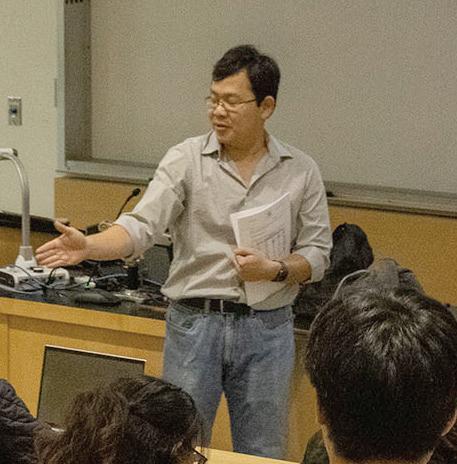
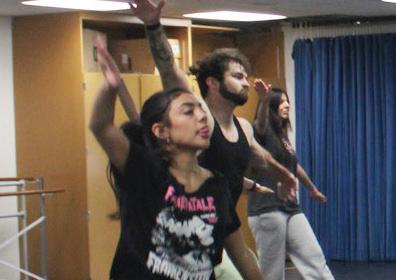
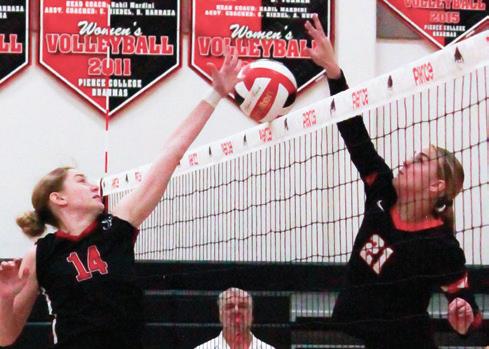

6201 Winnetka Ave.
Woodland Hills, CA 91371
Room: Pierce College Village 8211
Phone: (818) 710-4115
Phone: (818) 710-4117
Website: www.theroundupnews.com
Email: newsroom.roundupnews@gmail.com
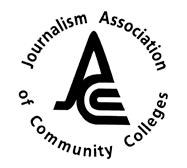
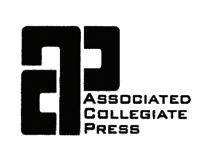

Editor-in-Chief..........Abraham Elizalde
Managing Editor..............Violet Garcia
Photo Editor...................Karla Delgado
Photo Editor................Myraneli Fabian
News Editor.................Zamourad Iqbal
Campus Life Editor.........Emily Garcia
Opinion Editor...........Melanie Somoza
Sports Editor....................David Cohen
Copy Editor................Gerardo Escobar
Online Editor...............Daisy Aguinada
Reporters
Natalie Baharian
Gabriella Carlos
Emileo Carreon
Brianna Fuerte
Ivy Jade Garry
Elizabeth Holodnak
Tim Lewis
Olivia Muñoz
Chris Rubinstein
Leah Sklarski
Photographers
Josue Aguilar
Damian Celedon
Cherie Clark
Bryce Edwards
Calvin Henry
Melanie Jurado
Sandra Mazas
Alissa Nguyen
Jesus Rivas
Advisers
Jill Connelly
Jeff Favre
Tracie Savage
Morgan Keith
*For advertising, call: (818) 710-2960
Corrections?
Email us at newsroom.roundupnews@ gmail.com
Scan the QR code below to subscribe to our weekly newsletter

Professor Aron Kamajaya giving a lecture to his students at Los Angeles Pierce College in Woodland Hills Calf., on Nov. 14, 2025. Photo by Damian Celedon.
Novemberarrives quietly at Pierce College. While other cultural heritage months fill the campus with panels, workshops and student activity, Native American Heritage Month often passes with minimal recognition, leaving students without opportunities to engage and learn.
Students deserve access to accurate education, representation and cultural perspectives. With a campus as diverse as Pierce, Indigenous-led programming would give students a space to learn about local tribes, their histories and to participate in meaningful conversation.
Pierce needs to host more events recognizing Native
American Heritage Month to bring authentic cultural awareness to campus.
California State University, Long Beach (CSULB) hosts Puvungna Fall Celebration and Pow Wow: Social Dance Workshop throughout the month. Pierce’s lack of programming leaves a noticeable gap in student engagement and cultural understanding.
As U.S. News said, “College students can learn from peers with different perspectives shaped by a variety of experiences. The interaction between students with different worldviews can help change minds or shape ideas.”
Without Indigenous-led events, Pierce students miss
that opportunity.
That absence is even more striking given the previous presence of the Old Trapper’s Lodge on campus.
As reported previously by the Roundup, the landmark was moved to campus in 1988 under an agreement that the college would preserve it. But concerns over its stereotypical and sensitive depictions resurfaced in 2024, sparking conversations about its removal.
Today, the installation sits covered and partially removed, reminding the campus of its complicated relationship with historical representation.
Given Pierce’s history housing this controversial landmark that has raised questions about cultural
sensitivity— the college has an even greater responsibility to elevate real Indigenous perspectives.
Hosting Native American Heritage Month events led by Indigenous speakers would give students the chance to learn directly from the communities whose stories are often overshadowed or misrepresented.
Events like these matter because they shape how students understand their environment and one another. Indigenous-led programming at Pierce would not only honor the month, but it would strengthen cultural awareness, support representation and help build a campus that values honest and authentic learning.
On Nov. 19, 1997, Pierce College released Volume 87, Issue 11 of The Roundup, featuring the Holiday Pet Pageant award winners and prizes. The event was sponsored by the Registered Veterinary Technician (RVT) Club to raise funds for new equipment and supplies. It also included a petting zoo where children could meet goats, sheep, and baby pigs. Pets were also available for adoption. Cinnamon stole the show and won the Best Dressed award for her butterfly costume.
Timber, a mixed breed of husky and German
Shepherd, was awarded a ribbon for third place in the canine category.
A Shih Tzu named Blue, known for his single blue and brown eye, won second prize. The issue also included listings for various parttime sales positions at the SEARS Marketing Center. The job board also featured a retail job offering paid training and the opportunity to work as a bartender, earning around $100-$200 daily.
Copy by Zamourad Iqbal
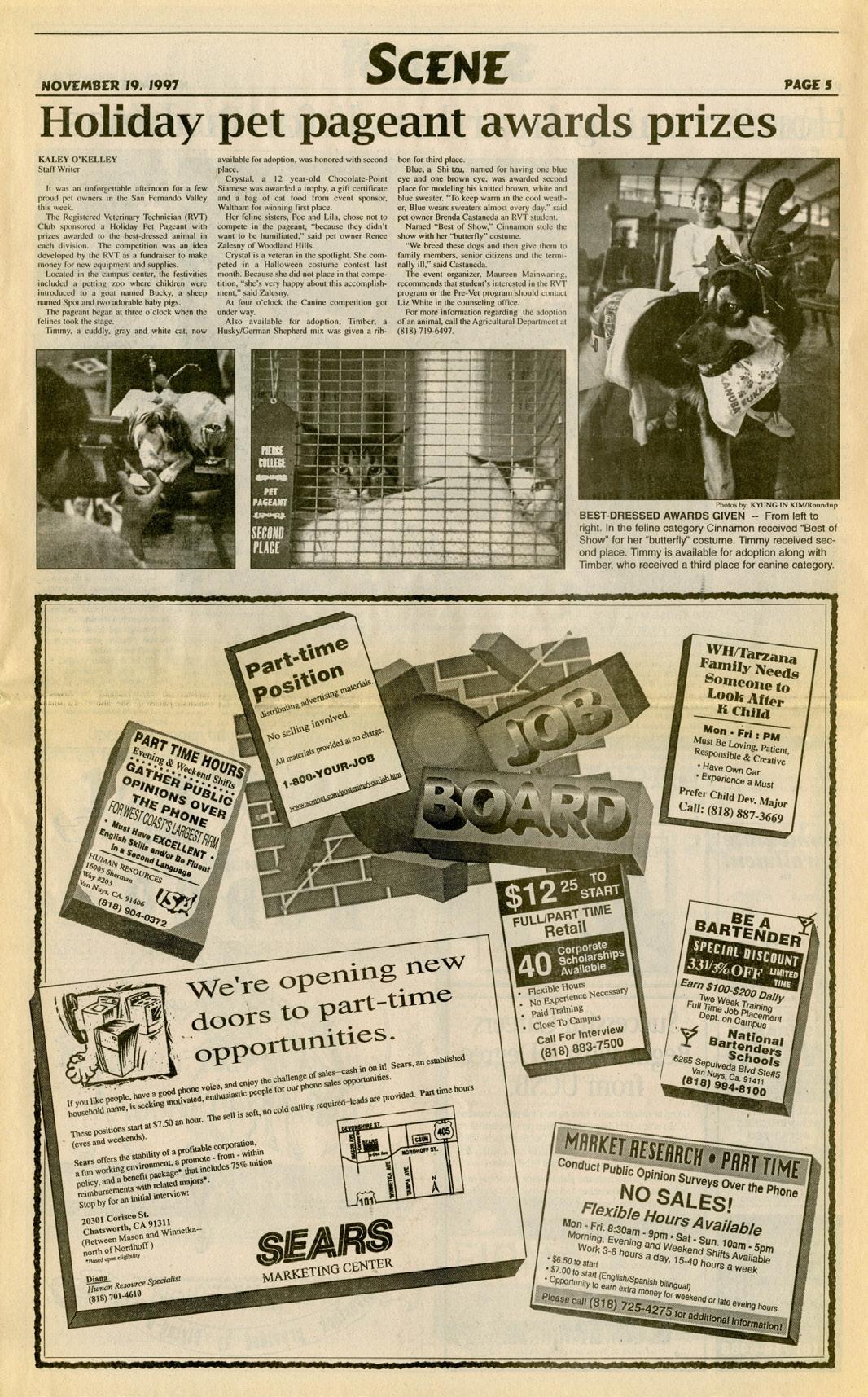

A photo of archived Volume 87, Issue 11 of The Roundup News.
November 18, 2025

Missions provide gateway to past
By Elizabeth Holodnak Reporter

Missions whitewash historical crimes
By Natalie Baharian Reporter
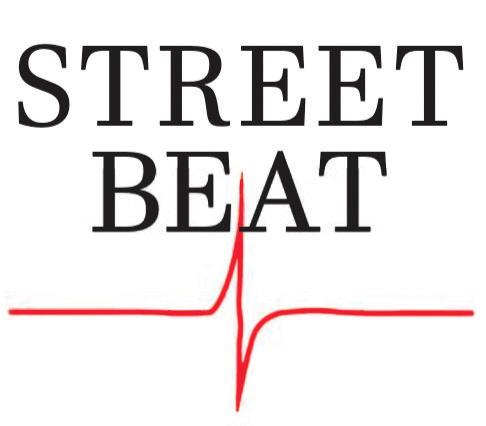

““I think it would be cool if it were a four-year because if the price is the same, you could get your degree for cheaper””
KarenGuardado-PlantScienceMajor
California’s 21 historic missions are more than old buildings, they are landmarks that define the state’s identity. In a time when people are searching for deeper understanding and connection, visiting the missions offers an experience that blends history, culture, and appreciation for the foundations of California.
As the California Missions Foundation explains, “Nothing defines California and our nation’s heritage as significantly or emotionally as do the 21 missions and related historical sites.” Traveling to these missions allows people to explore the roots of the Golden State in a way no textbook ever could.
These missions stretch from San Diego to Sonoma, forming a pathway through
Fordecades, both students and adults have been taught to view missionaries through the perspective of the Catholic aesthetic. But if you go beyond appearances, there is a long history of cultural deprivation, forced labour and violence as a means of conversion.
California missions are not just historical sites but institutions established from the basis of colonization, which has resulted in either death among Indigenous populations or coercion to leave behind their roots. To visit these sites with rose-colored glasses fails to acknowledge the atrocities committed, further misrepresenting history and subconsciously condoning it.
“California was just one of
California’s earliest settlements. Many major California cities, such as San Diego, Santa Barbara and San Francisco, grew directly from mission communities. Their beauty and architectural style helped shape the identity of each region.
According to the California Missions Foundation, “Their beauty, stature and character underlie the formation of California,” reminding visitors that the story of the state began long before highways and skyscrapers.
For tourists, students, and residents alike, the missions serve as accessible gateways into the state’s past. They are among the “Most popular tourist destinations in the state, attracting millions of visitors each year,” as the Foundation notes.
the many “regions [in which] missions were the instrument for the extension of Spanish rule, said NYU Gallatin School. “This further proves that missions were more about expanding an empire than about spreading the teachings of the Bible.”
The reality of Manifest Destiny encompassed more than just the spread of religion, but the entitlement of Western settlers. It was this belief that motivated the creation of missionaries. Rather than being peaceful and friendly communities for all, as we have been taught to believe, the intention behind missions was to suppress and control.
As early as fourth grade, students are taught “Missions Units” that focus on the monuments within Catholicism, such as Spanish
The missions hold educational value. History. com explains that the mission era introduced “new cultural and religious ideas to California,” influencing art, language, architecture, and community development. Visiting these sites allows people to understand how California’s earliest communities were organized and how agricultural techniques, building craftsmanship, and Spanish colonial design took shape.
As loc.gov states, the Franciscans came to the region “To train them for life in a European colonial society,” showing how structured instruction and skill building were foundational parts of mission life. From adobe walls to handcrafted tiles, each mission offers a different
religious figures, common practices, and architecture.
Yet, they fail to mention the forced religious indoctrination of Indigenous Californians. Not only were they prohibited from partaking in their rituals and practices, they were forced to participate in Catholic religious ceremonies and learn the Bible.
“Intense pressure is put upon students (and their parents) to create a ‘Mission Project’ that glorifies the era and glosses over both Spanish and Mexican exploitation of Indians, as well as enslavement of those same Indians during U.S. rule,” according to the Zinn Education Project.
Many Native Americans died of disease during this era due to a lack of exposure to diseases native to Europe. Labor camps were
piece of the state’s cultural mosaic.
The Foundation notes that “without the missions, an important piece of our history would be lost.” By visiting, the public plays an indirect but vital role in helping protect the missions. Attendance supports museums, restoration projects, and continued research, ensuring that future generations can enjoy these remarkable places.
As the California Missions Foundation states, “The missions are California’s cultural treasures. Working together, we can ensure their future.” Visiting them is not just a trip, it is an act of honoring the state’s past, celebrating its cultural richness, and preserving history so it can inspire generations to come.
places of disease, religious indoctrination and violence.
“They were being forced from their homelands, brought into the mission system — frequently against their will — and treated as children,” said the LA Times.
Being viewed as secondclass citizens or even unhuman, the way Indigenous peoples were treated in missions goes against the very idea of being morally good.
For Californians, the goal shouldn’t be to entirely forget missions but to acknowledge what they actually stood for. They were harmful institutions that dismantled an entire ethnic group. Instead, we should be celebrating Indigenous communities, making it known that we stand with them and condemn the atrocities afflicted upon their ancestors.
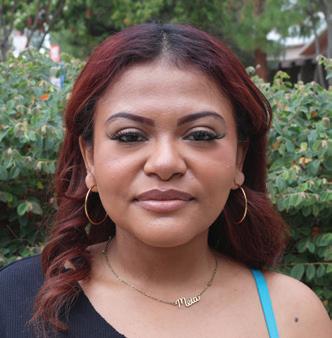
“I feel like this is a really convenient option both financially and locally, so I think a four year program would definitely be beneficial and would probably have a lot more students coming back”.
NeiaHeredia-BusinessMarketingMajor
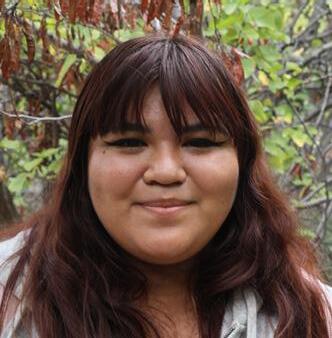
“They should offer a program where instead of transferring, once every GE is completed you can get congratulated with a degree without transferring.”
KrystalLuna-EducationMajor

“It’s good for a four year program, it’s better for your wallet and school is school, we all get taught the same amount. Some people from CSUN get their materials over here so I think it’s the same thing but cheaper.”
Jose Lima- Welding Major
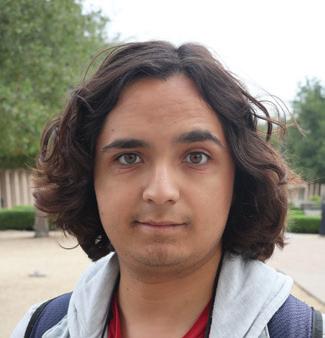
“I think they should stick with it, it’s a good motivation”.
Alberto Colmenares-Peña Music Major
By Zamourad Iqbal News Editor
Los Angeles City Charter Commission members listened on Wednesday, Nov. 12, in Building 600, to a presentation on reforming the government structure for the upcoming charter rewrite.
The public commentary session emphasized the need to change the voting system and expand the number of city council officials.
California Ranked Choice Institute Executive Director
Marcela Miranda-Prieto said the Proportional Rank Choice Voting (PRCV) provides better representation and
“The reason it’s so important is that a lot of people feel disenfranchised with their current electoral system,” Miranda-Prieto said. “It’s sometimes all about corporate donations, power players, and the lobbyists. They should be representing normal workingclass people. So that’s why we want rank-choice voting for fair elections and just democracy. That is our core mission as the California Rank Choice Voting Institute.”
Pierce College Political Science Professor Denise Robb spoke about her dissertation on rank choice voting.
“My doctoral dissertation was on rank-choice voting at UC Irvine, focusing on the main alternative method of single-winner voting,” Robb said. “People really like the idea of ranking choices instead of just selecting one person, and it’s frustrating because you don’t have anyone on the ballot to vote.”
Former Santa Monica Mayor and City Councilmember Michael Feinstein highlighted the importance of expanding the city council.
“I’ve been advocating to have multi-seat council districts, to have three members per district, and electing them by proportional representation,” Feinstein said. “So, in terms of responsiveness, multi-seat districts offer a better model for residents to be heard.”
Feinstein also added that the charter must be reformed every 10 years.
“The charter was amended in 1999, and A lot of things are still there from 1925. It’s a very different city,” Feinstein said. It has to be a living document. So, charter reform should be considered every 10 years. This should be an ongoing process.”
Los Angeles City Charter Commission Diego Andrades said the commission is reviewing the role of the city council attorney.
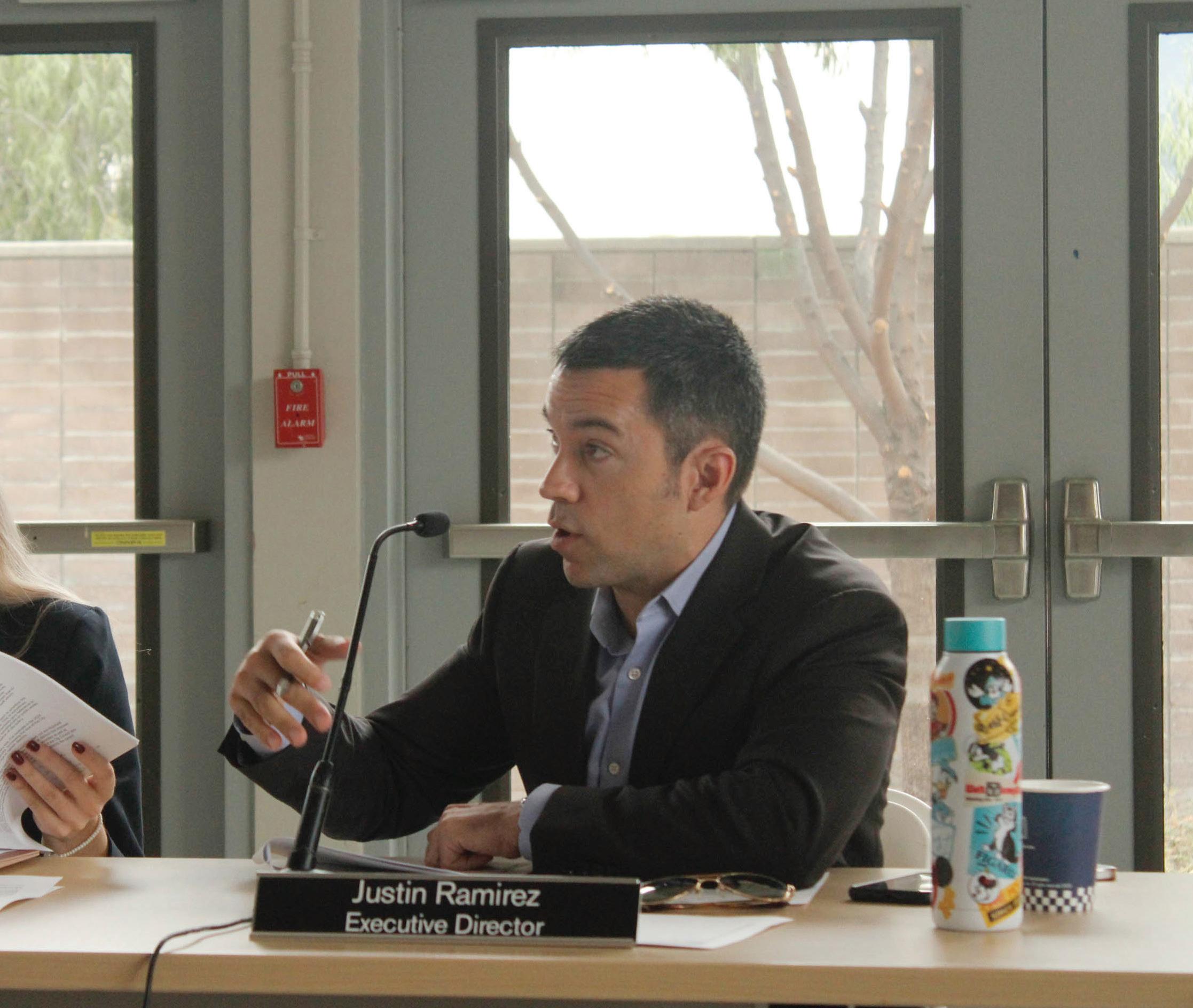

“We are reviewing the role of the City Attorney because there have been accusations that, through several city attorneys, the role has been further politicized,” Andrades said.
Andrades also requested that the LA City Council permit the commissioner members to seek legal advice from outside counsel.
“The charter does have a caveat: we are allowed to ask the city council to waive this conflict so we can seek outside counsel without having to ask the city attorney for such a privilege. On behalf of the committee, I request the city council’s support to allow the commission to use outside legal services to review and advise on all work related to charter sections governing the office of the city attorney.
Woodland Hills Warner Center Neighborhood Treasurer Heath Kline complained that the LA City Council had stopped taking telephonic public comment.
“I want to speak to the fact that the city council no longer takes telephonic public comment, and that is so disenfranchising to everyone,” Kline said. “The majority of the people who don’t have that connection have to pay a lot to voice their concerns. And that’s disenfranchising.”

By Chris Rubinstein Reporter
Due to a recordbreaking 43day government shutdown, the Supplemental Nutrition Assistance Program (S.N.A.P.), known as CalFresh in California, had been put on hold. Although the state is expected to move forward with issuing November payments, the recipients are still feeling the repercussions. During this period, Pierce College faculty have focused on making sure students don’t go hungry by providing food resources and referrals.
Head of the Brahma Bodega Geremy Mason has been doing everything he can to make sure students were supported through this crisis.
Mason said he noticed an uptick in traffic during last month’s fresh bodega and suspected that it was likely due to the S.N.A.P. cuts.
“We did have a lot more people at our fresh bodega three weeks ago,” Mason said. “And I think that was partly due to the fact that people had not received their S.N.A.P. benefits at
that point. But we can’t really say whether it was caused directly from it, but I’m pretty sure that was an impact. It was a factor.”
The Bodega has referred students to their services and food pantries in the community for extra support. During the shutdown, Mason said the Brahma Bodega was able to supply students with more food than usual due to the extra donations from their community partner.
“When we do our orientation, we’re telling students, ‘Hey be aware that these programs might be affected, but still go ahead and apply if you’re interested,”Mason said. “But we’ve been working closely with [the] student lunchbox, our partner, to get more money [and] more items to give away.”
Pierce’s music department has also assisted students with free food for the holidays. Music instructor assistant Barmey Ung distributed granola bars, noodles, apple sauce and soups to students in Music Office 3416. Ung said the bodega assisted him with food to outreach to students in need.
“Our department pooled our resources together to get as many food donations as we can to support our students
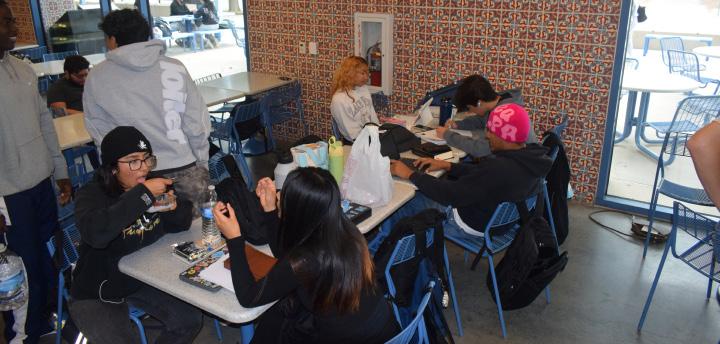
who may have been affected or who are struggling regardless of the shutdown,” Ung said. “Brahma Bodega gave us a bunch of snacks[and] a bunch of chips, so we were giving those out for a while. We do have some vending machines [options]. ”
To ration the food distribution, music department faculty are allowing three items a day per student in need. Due to the limited supply, this resource may last until the end of the month.
Students have been taking

advantage of the services since food stamps have been cut.Communications major Joseph Lomeli said the Brahma Bodega helped him and his family when S.N.A.P. benefits were taken away.
“When they took it away, I would go to the bodega and get snacks at school rather than spending money at the cafeteria,” Lomeli said. “And I would take some stuff home for my family as well.”
Lomeli said he’s grateful for the resource.
“I love the bodega, I
love what Pierce does here, but I think making it more known to other people would be helpful,” Lomeli said. “Sometimes I go to the Bodega to get snacks and I’ll come back to the cafeteria where a lot of my people are and they’ll look at me and say, ‘What’s the Bodega?’ So just making sure that people know what it is and that they can take advantage of those resources would be good.”

By Leah Sklarski Reporter
FilmClub hosted a photography workshop featuring guest speaker Fernando Castro, who offered students an inside look of working on a film production and using professional equipment.
Fernando Castro is a film director and came to Pierce College to give insights and advice to students who are interested in pursuing a career in becoming a film director, director photographers (D.P.), lighting and sound. He answered questions about career focus, the filming process, how to use gimbal film equipment and the technical techniques..
Castro spoke about the 5 stages of film production and explained how the roles work together to make a project come to life. He elaborated on the creative vision and artistic direction a director needs in order to carry out a well made film.
Castro said the director photographer plays different roles within film production and while on set.
“The most important thing
about a director photographer is the ability to delegate. Being able to direct the assistant camera(A.C.) person, along with telling the lighting team what to do next, is very important,”Castro said. “You can’t really do this all by yourself and have it be the best it can be, you need to have people you can trust.”
Castro spoke about the true-crime daytime series he and film club president Paige Nelson are developing. The show is currently streaming in Europe and is expected to debut in the U.S. soon. They are currently working on the second season.
Computer science major and film club member James Haroun said being a part of the club’s events is exciting.
“ I’m really excited for the events we are going to have later on, especially the film festival,” Haroun said. “I am interested in how the community is so involved with films and how to understand films so well. It kind of encourages me to watch more movies.”
Film club president Paige Nelson said the film club plays an important role on campus.
“We have been one of the

longest clubs on campus because we are so engaged in the student body,” Nelson
said. “We have a lot of events like screenings, fundraisers, we just had a scare maze that
was very engaging. Things like that keep our presence on campus.”
By Natalie Baharian Reporter
Inthe North Gym on campus, the Pierce College Dance Department held a full-day event, bringing different students together for some fun, combining dance and culture on Saturday.
Hosted in the format of a workshop featuring multiple styles, students, both dancers and non-dancers alike challenged themselves in a wide array of dances.
The event offered four types of dance classes such as hula, hip hop, jazz funk and contemporary. Being diverse from one another, each instructor was able to expose students to a new dance form
Beginning with the Hula dance, instructor Taimane Fiaseu created a safe space for the dancers to grow as they learn a dance not commonly seen in the dance curriculum.
“A point in which your mind and your body meet,” Fiaseu said.“Everything starts to come together once you reach that calm.”
The second dance class transitioned into hip hop with instructor Dennis McKinley, who brought energy and fast-paced choreography that
challenged the memorization of students. By combining quick footwork and classic moves from the 80s and 90s, he was able to teach students moves from his childhood.
“For me, hip hop has always been about family,” said Dennis. Seeing the people around me participate in these dances really motivated me to join and be a part of that community. Even growing up seeing dancers like RunDMC and MC Hammer really inspired me to incorporate their styles into my dances. Being a part of the Black community and knowing the origins of hip hop within it, I really do love to get involved in it and hope that I can share that with others as well.”
With Jazz Funk, students were able to experience a form of jazz that is an offshoot of original jazz dancing. Combining techniques from burlesque dancing, instructor Jack Gonzalez leaves space for interpretation with his dancing.
“Especially for people in this class that want to be dancers, one of the most important things is versatility and being able to do different kinds of dances”, said Jack. “In many cases, for auditions, they will ask you to do all
sorts of dances and you need to be prepared to do them. What makes someone a good dancer is being able to do different kinds of dances well and mastering them so that people can see that you have different skills to offer.”
With really quick and sharp moves, Jazz Funk separates itself entirely from any other dance.
“Dance has always been about trying something new and getting yourself out there, “ said Beatrice Reyes, a dancer at Pierce. “I would say hip hop is one of my favorites. I think we often find ourselves comparing ourselves to the instructor, fellow dancers, and even our past selves. But to put yourself first and at least try is the most important thing, regardless of how good you were at it.”
The class made their way back to the more calm and emotion-driven movements that they started with.
Ending with contemporary, dancers were able to decompress and build the fluidity of their motions as opposed to just going through the motions normally. Using dance as a form of emotional expression was one of the main goals for instructor Allen Mirny, a student at Pierce.
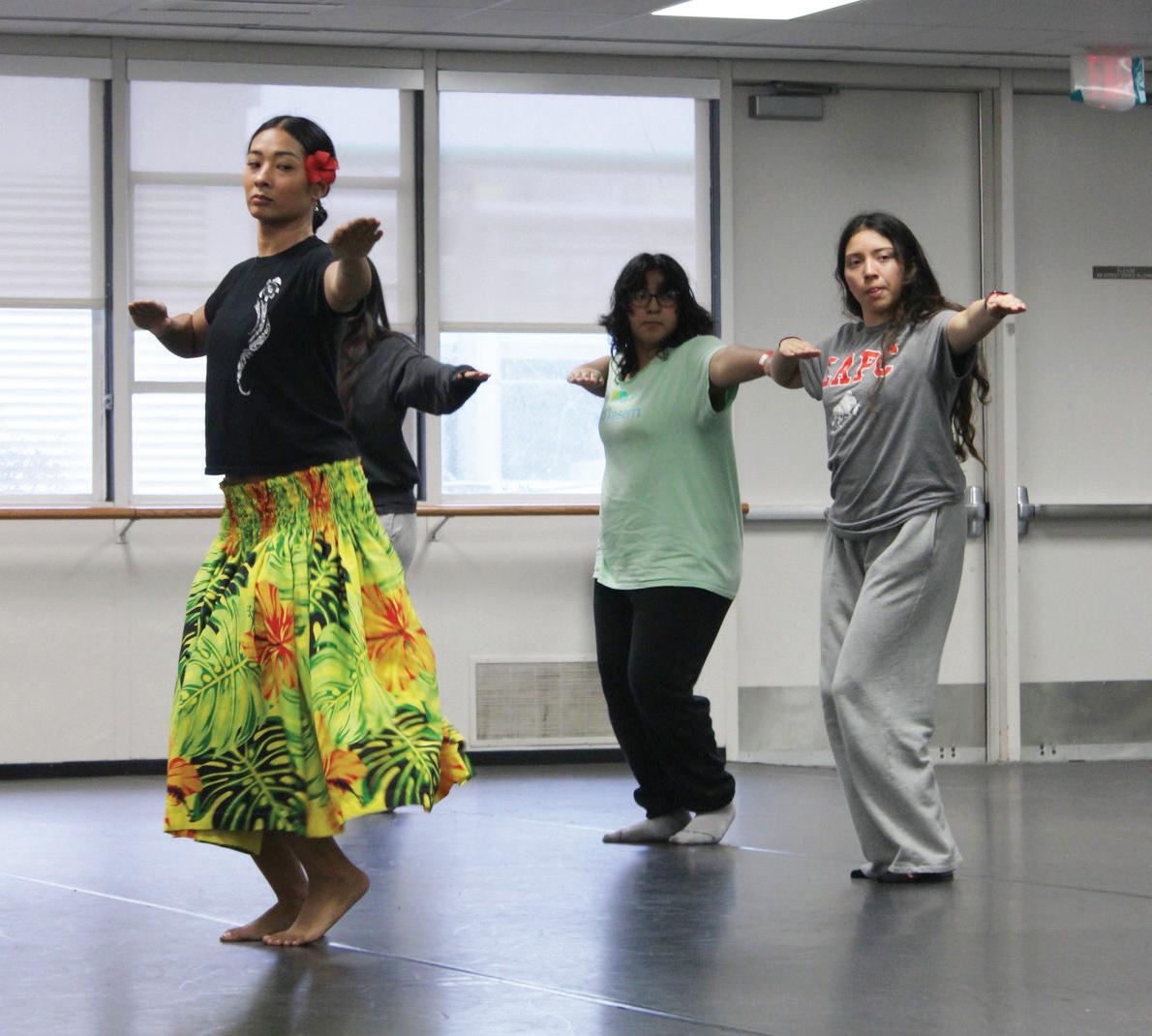
“What makes contemporary so special to me is that we can express ourselves without worrying about it being too emotional”, said Allen. “That’s the whole point; trying to convey a message through dance that you may not really see with other kinds
of dance forms that are more fast-paced.”
These different combinations of styles helped strengthen the skills of students and brought exposure to people who may be new to the dancing world.
Students browsed and selected items off the racks that ranged from plaid shirts, blazers, slacks, shoes and dresses. They were able to pick out free pieces of clothing to use as professional attire for work or interviews. The Career Closet event was set up on The Mall on Wednesday, Nov. 12. Biology major and Career Closet worker Rojan Rasouli supervised the event.
and copy by Cherie
Elementary Education
Brijido Tueul, Chemistry Major Noah
and Film Major Sebastian Berrospid at the Career Closet event at Pierce College in Woodland Hills, Calif., on Nov. 12, 2025.
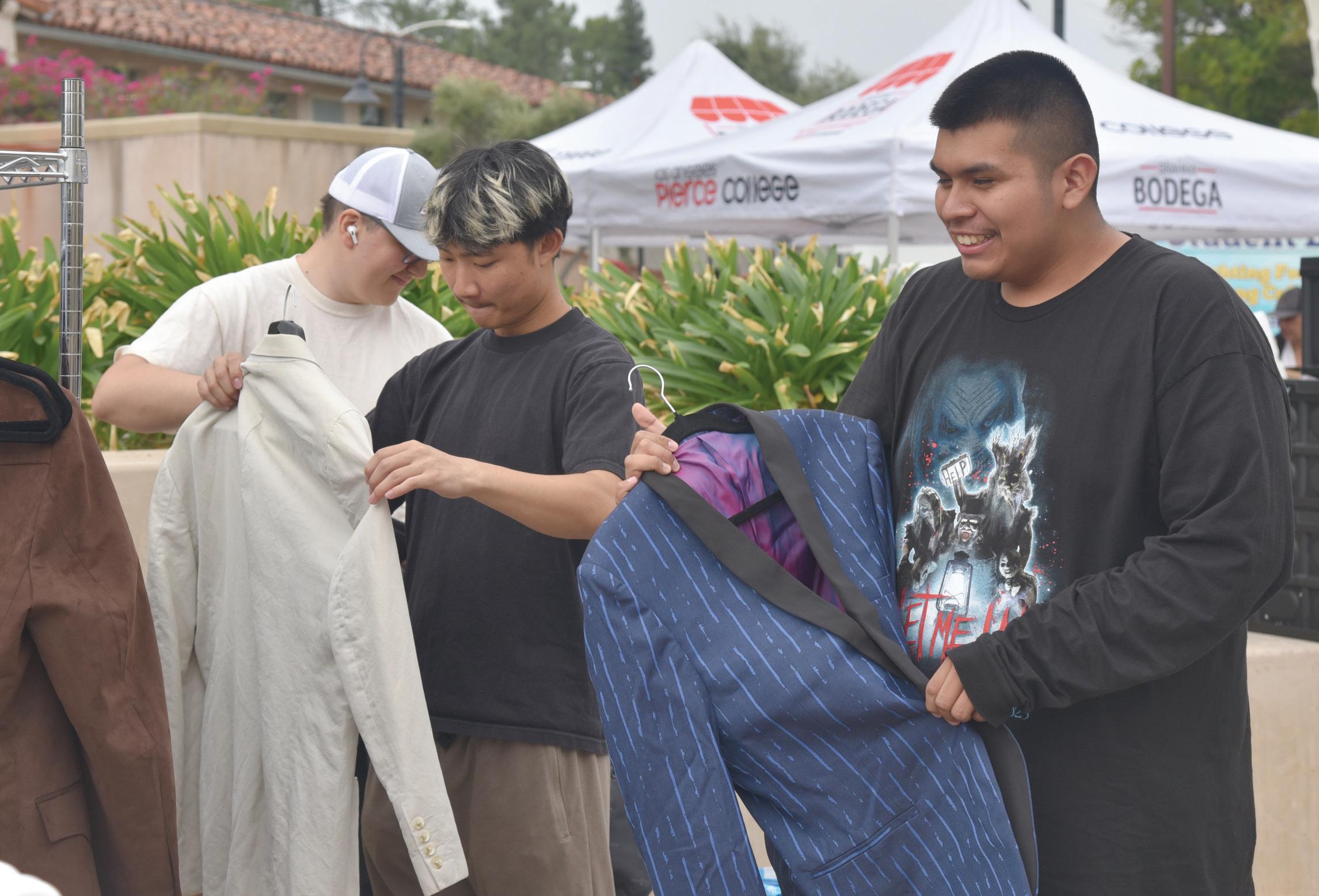


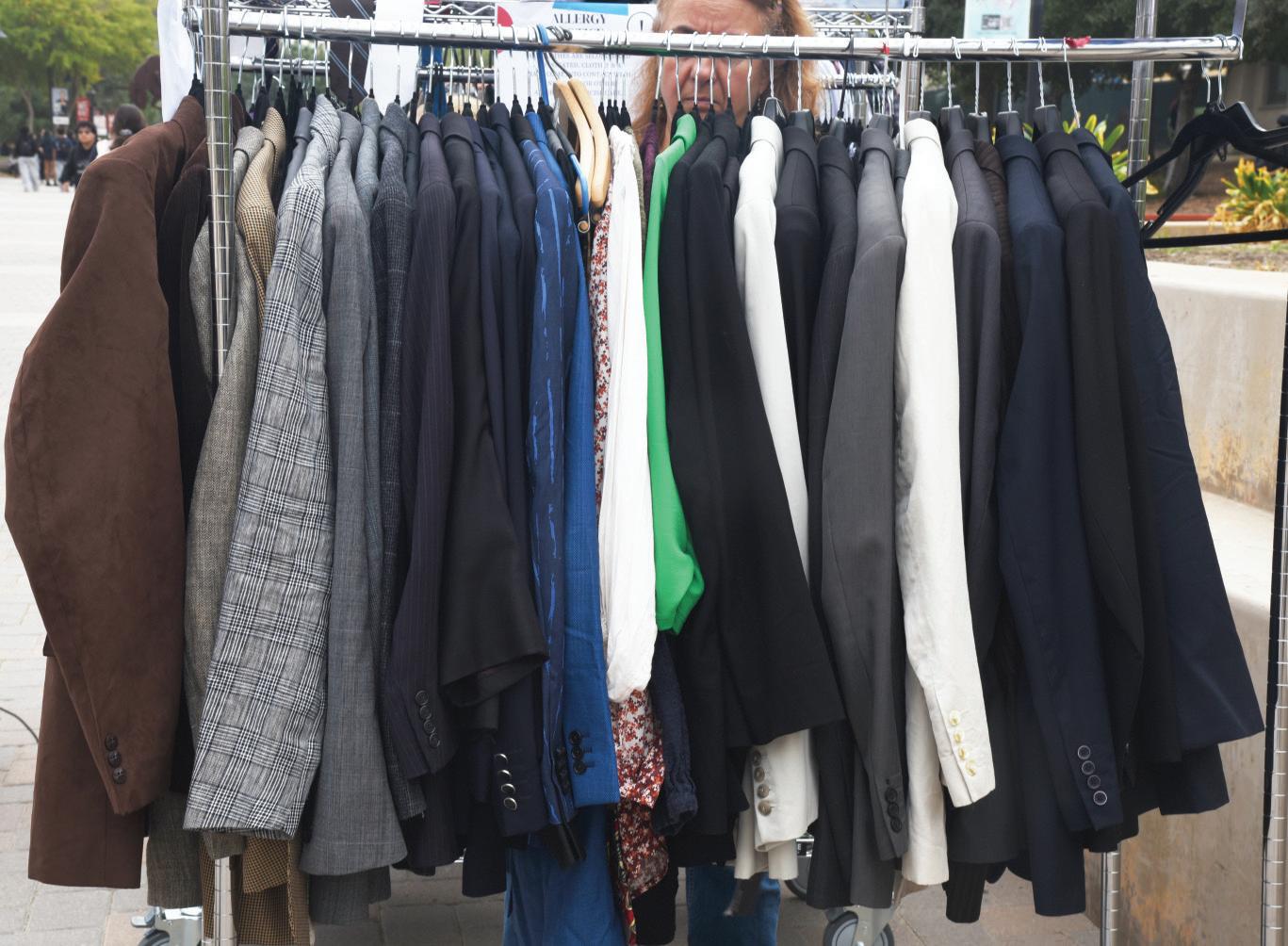
By Olivia Muñoz Reporter
Few teams at Pierce College can boast a reputation like the women’s soccer team.
This season marked the team’s 350th win in program history, and the 24th time they have made the playoffs. These achievements are notable in that they have played against competitive and successful teams with a winning track record, such as Santa Barbara City College and Ventura College.
However, the road to success this season was paved with many challenges.
Several players, including team captain Natalie Grant, forward and defender Rian Solan, midfielders Melany Gonzalez and Ayiana Brazile, defensive midfielder Sybella Buenrostro and defender Natalie Villanueva, all suffered injuries. Solan, Villanueva and Gonzalez’s injuries were all season-ending.
Grant, who was able to return to playing after taking some time to heal, said the difficulties of seeing her teammates suffer game after game is what kept them motivated.
“As a team, we’re kind of feeling a little down at times because it was just injury after injury after injury. It was really hard to see a positive side at times,” Grant said. “But knowing that we were all injured, and we were still playing for each other, made it easier. It gave us a reason to keep going and keep playing and a reminder of why we were there.”
Sports information specialist Jose Quevedo said the team’s ability to persevere through the season despite these setbacks was an accomplishment admired by the entire Athletics Department.
“It makes all of the athletics program proud to see how resilient they are, how they just don’t get bummed out because of the injuries,” Quevedo said.
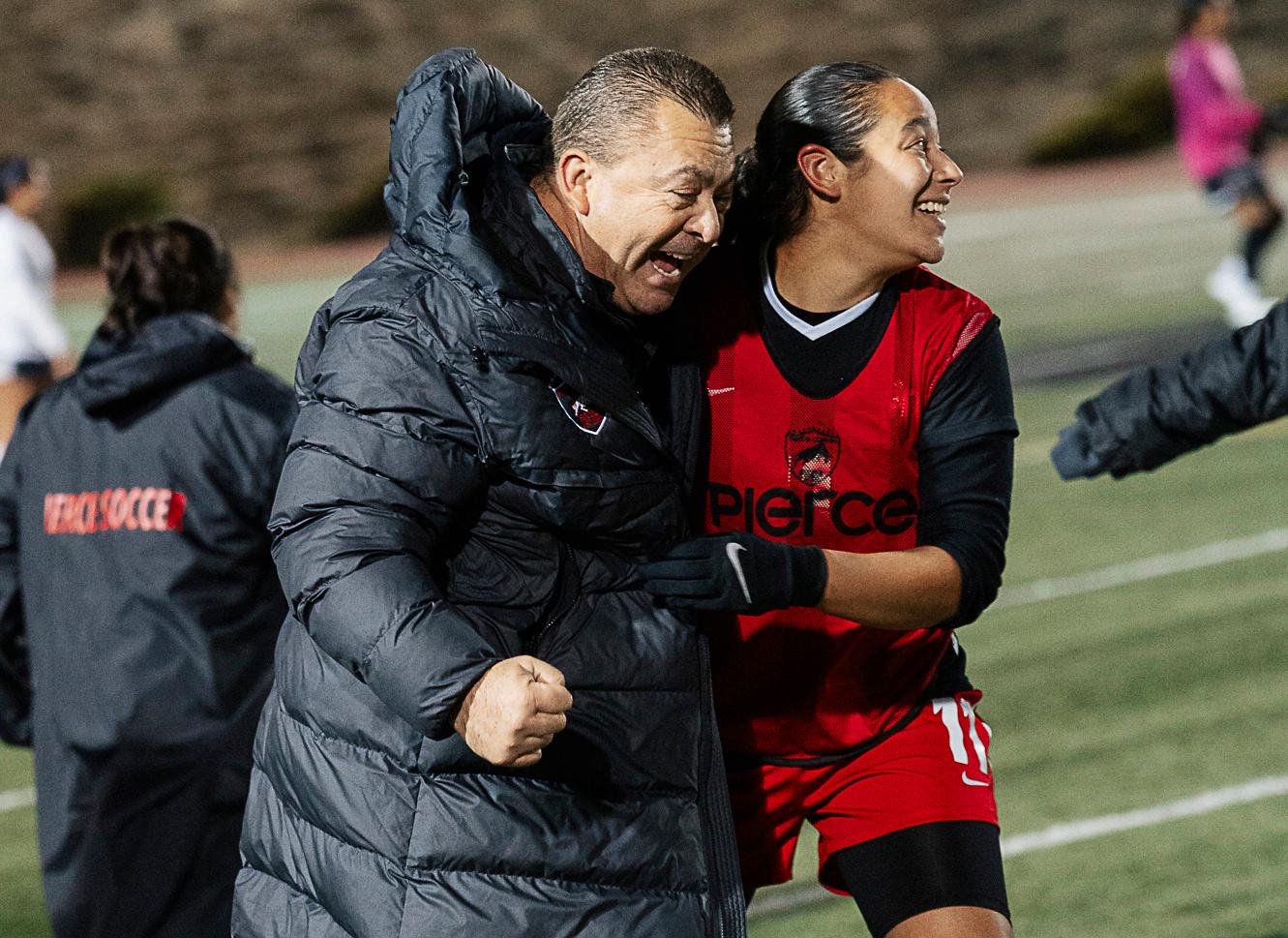
Pierce College women’s soccer head coach Adolfo Perez celebrating with forward Livia Pereira (#11) after a SoCal Regional Playoff win against El Camino College at Shepard Stadium in Pierce College at Woodland Hills, Calif., on Nov. 20, 2025.
“Some of them, even though they have scratches and bruises, still want to play and are like, ‘No, coach, I need to get in there. Our team needs me. They just play for one another.”
The team finished this season with nine wins, five ties and five losses. Coach Adolfo Perez said that the team’s proudest accomplishments were winning their away game against Los Angeles Harbor College 140, a close game against Santa Barbara College that they lost 1-0 and tying with them 1-1 in a conference matchup.
Perez said that their games against Santa Barbara proved the team’s strength.
“We can match up with anybody,” Perez said. “We played Santa Barbara twice and they tied us in the last minute, and then here they beat us one to nothing, and we were tied into the last 10 minutes of the game. We gave them a great game.”
Grant attributed their win against Santa Barbara to the
strong team camaraderie.
“We played very strongly and we connected very well the entire game,” she said. “It’s something I noticed that our team tends to play to the intensity of the other team. We definitely displayed that when we played against Santa Barbara, but in a positive way because they’re a strong, intense team as a whole, and we were able to match that.”
The team’s strong and determined outlook this season has allowed them to get to the California Community College Athletic Association (CCCAA) playoffs against Mira Costa College on Wednesday, Nov. 19.
When reflecting on the season and the success they have had, Grant said she and the team are just content to be a part of the women’s soccer legacy.
“It’s a great feeling to be a part of something bigger than ourselves, the whole program and the players that came before us, and just get to be a part of that celebration,” she said.

By Olivia Muñoz Reporter
Rotation changes and lack of leadership resulted in a sweep from Ventura College. Women’s volleyball concluded its season’s home matches with a 3-0 loss against Ventura Wednesday, Nov. 12.
The Pirates maintained a strong defense, allowing them to establish a commanding lead early on. When their score reached double digits, Brahmas outside hitter Caylin Norwood brought her team to life with powerful, sharply-angled spikes. The first set concluded with Ventura College winning 25-17.
The second period started on the side of the Pirates. The effort was made more difficult by the absence of team captain Kandace Bowens.
Head coach Joseph Arechiga commended the team for committing to the game despite this setback.
“It’s always tough to lose a huge part of our team,” Arechiga said. “She’s great on offense, great on defense, and she’s our middle blocker, so she runs everything. She’s our captain and everyone listens to her. But the girls did a great job stepping up today.”
This wasn’t the only challenge Pierce faced. Middle blocker Trinity Brown and Galvan had to change positions for this game, a switch that Galvan said was an interesting opportunity.
“It’s good to switch it up and just try new things,” Galvan said. “At the beginning, it was very annoying, but now I’ve gotten used to it and I think it’s a lot of fun to have the ability to play a different position.”
The Brahmas managed to score one point more from the first match but ultimately lost, ending the set 25-18.
Norwood attributed to a good mentality going into the game.
“Today, I do feel it was the best I’ve ever had my mindset and, throughout the season, my mindset has gotten so much better from the beginning,” Norwood said. “At the end of the day, it’s a team sport. You can’t be selfish because you’re not playing by yourself.”
The period ended with the Pirates taking the victory home with a score of 25-16.
Outside hitter Valerie Lopez is optimistic about the conference and the way they played against the Pirates.
The Brahmas soon had a game against West LA where they won 3-0 on Nov 13.
